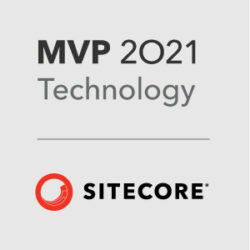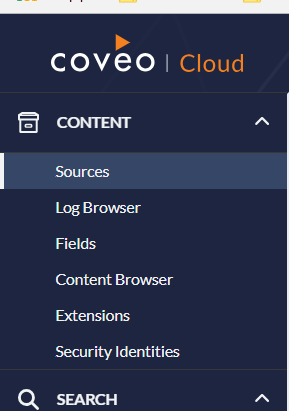I am going to list down each important problem and note options to tackle each. Do note that though most of the solutions I would attempt to provide are generic, it highly depends on your Sitecore implementation and customization done to Sitecore in general.
One thing that really helped me solve some of these is understanding when and where Coveo connects with Sitecore. I would recommend to deep dive on this to any one who is attempting to implement Coveo For Sitecore on their multi tenant and multi lingual Sitecore implementation.
I will start by noting the first problem we faced right after Coveo for sitecore installation on our system. On Diagnostics page, we had the error such as noted in question and answer below.
One of the first question to answer when implementing Coveo For Sitecore is – Does your Sitecore implementation have a custom link manager as that drives what you would need to watch out for or customize if needed, a quick way to check would be
-> Go to your /sitecore/admin/showconfig.aspx and examine what you see in the node below. if you see default provider as something other than “sitecore”, then, you can ensure that there has been some customization done on this. To be honest, any medium to high sized Multi tenant instance that has been active on Sitecore for long time would have some customization around it. So, it is even more important to know how to ensure Coveo works with your custom link provider settings.

For instance, in our case languageembedding setting on Linkprovider was set to “always” which means that any website/site served by Sitecore, when a link is generated it would append language to it. That should surely ring some bells, in Coveo For Sitecore case upon installation of package, you would see three new sites in the <sites> node when you take a peek at showconfig which are named as coveo_website, coveoanalytics, coveorest. We definitely do not want to add language embedding on these URL’s here to ensure we do not throw off internal business logic on Coveo end.
To gracefully solve this, I would recommend having an ability to use different Link Providers per site. There is a very decent solution compiled by my favorite Sitecore MVP Jammy Kam below.
Site Specific Link Provider for Multisite Implementation in Sitecore
By doing this we can assure that Coveo specific sites do not have language embedding in it that would cause issue noted on Q&A above.
Of course, if your sitecore implementation was done more on old school style where the answer was – There is a pipeline for that. 🙂
In those cases, check to see where you can ensure to exclude Coveo sites from having language embedding on them.
One open question I do have is would this be any different with Sitecore 9.0+, a short answer might be a NO. If any one has any input in regards to this, leave a comment.
That is it about our first ever hiccup, more to come soon. My hope is that this series will help any one who is driven to use Coveo for Sitecore components and power of framework on a complex Sitecore instance, but, are worried that it might be quite a feat or they might be safe using total custom system. You can re-visit my blog on this topic and I am sure you will get confidence in sticking to framework instead. 🙂
Tune in for more on this series!



